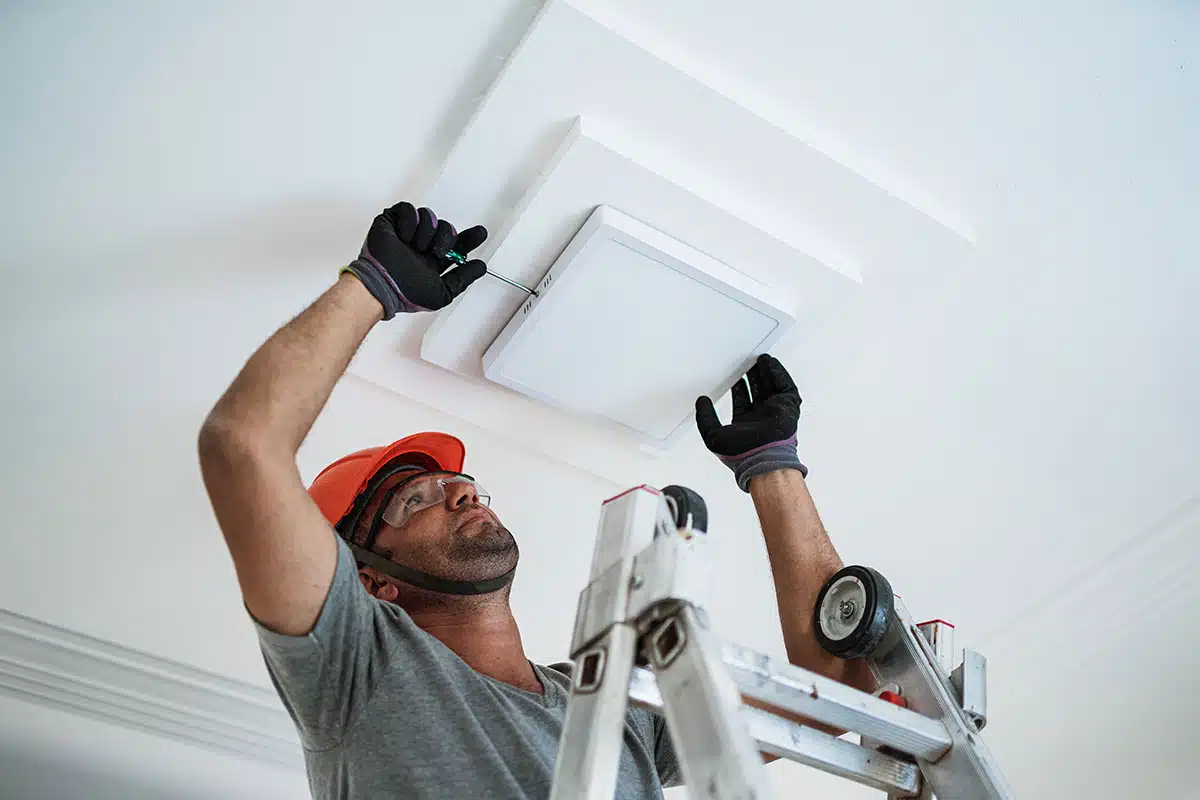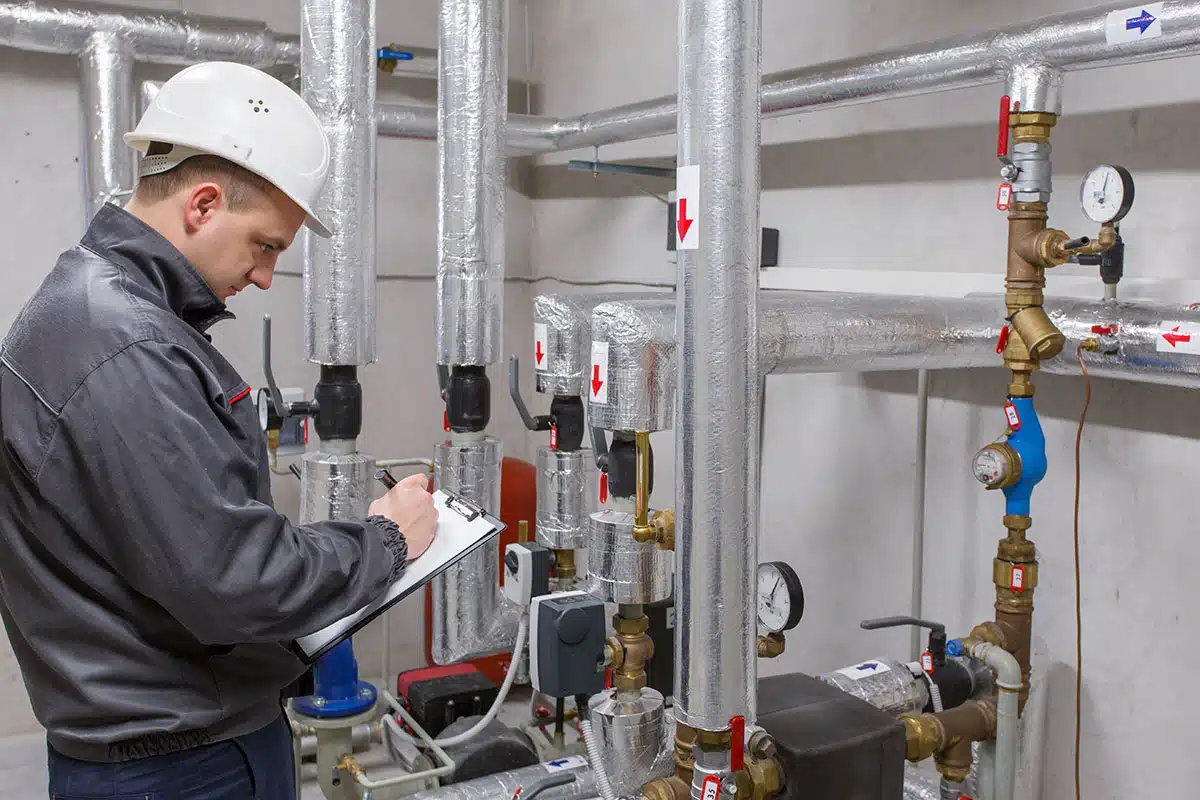In the array of daily tasks and skills required to ensure facility operations are streamlined, building energy management looms large. Energy is vital for a building’s ongoing security and asset operation, and poor or excessive energy use comes at a monetary and environmental cost.
Effective management of an organization’s energy also impacts tenant and market perceptions of a brand and its building operations. In fact, studies by ENERGY STAR have shown that when compared to typical buildings, energy-efficient buildings have a resale value that’s up to 31 percent higher and deliver rental premiums that are up to 16 percent higher.
Not only that, according to a 2024 joint report issued by PwC and the World Economic Forum (WEF), if organizations implement energy-saving measures (such as using AI to control existing lighting and HVAC systems) by the end of this decade, it’s possible to achieve up to a 31 percent reduction in global energy consumption. This reduction could result in annual savings of $2 trillion at current energy prices.
These numbers illustrate that energy-efficient improvements in processes and equipment can decrease energy intensity (the amount of energy used per unit of gross domestic product) by enabling over-utilized or wasted energy to be funneled into more productive activities. Using building energy management to facilitate the capture of wasted energy for productive use not only boosts economic growth but also saves money, strengthens competitiveness, and reduces carbon emissions.
Studies by ENERGY STAR have shown that when compared to typical buildings, energy-efficient buildings have a resale value that’s up to 31 percent higher and deliver rental premiums that are up to 16 percent higher.
So, what are the best ways to keep on top of building energy management? We take a look at this crucial area to see how you can start taking steps this year to optimize energy management in your building.
Building Energy Management: Modifications and Maintenance
Modifications that optimize building energy management range from moderate operations and maintenance changes that require little or no cost to large capital expenditures like replacing equipment.
Although it’s true that large energy savings can be gained from projects that require an upfront investment—such as replacing an HVAC system—small adjustments can also save energy, and a lot of small changes can add up to significant cost savings with minimal effort. To get you started, here is a list of energy-saving modifications and maintenance strategies that don’t require a huge dollar investment.
Lighting
- Optimize daylight. Relying on daylight instead of electric lights can reduce costs by 10 to 40 percent, so make the best use of natural light by opening and closing blinds strategically.
- Replacing fluorescent and incandescent lighting with LEDs can reduce energy consumption by up to 90 percent. And since LEDs last up to 50 times longer than conventional lightbulbs, you’ll also save on labor costs. Keep in mind that parking lot lamps and exit signs can also use LEDs.
- Look at areas with low traffic use and install occupancy sensors. This can save between 15 to 30 percent in lighting costs. And make sure that light sources aren’t blocked by drapes, bookcases, etc.
- Consider changing custodial schedules to reduce the hours per day that lights are turned on. In other words, consider having cleaning staff work during the day. Some facilities have found that cleaning a building during a time when occupants are in the building can actually help reduce tenant complaints—perhaps because tenants are more aware of the work being performed.

Maintenance and Repair
- Conduct a visual inspection of equipment insulation, ductwork, and piping, looking for tears, stains, etc. Repairing these will increase energy efficiency.
- Check that vents are not blocked by furniture or other items. Efficiency can be reduced by as much as 25 percent when air vents are covered.
- Ensure HVAC filters are changed regularly. When filters are dirty, the system must work harder, lowering indoor air quality and costing more to operate.
- For a more efficient HVAC, install variable frequency drives (VFDs). VFDs allow better flow control, so the system doesn’t run at full throttle when it’s not needed.
- Adjust building automation system (BAS) controls to automatically reduce the thermostat setting for times when the building isn’t occupied.
- Take advantage of your facility’s energy management systems (EMS) by ensuring staff are fully trained in all control capabilities. If the system is only used to turn equipment on and off or for time-of-day control, you may be missing out on energy-saving strategies.
- Regular HVAC check-ups are essential. An annual maintenance contract should include pre-season tune-ups, which will make the system more efficient and prolong its life.
- Keep refrigerator condenser coils clean and maintain an air gap of at least three inches between the wall and the back of office refrigerators or water coolers.
- Perform an afterhours/nighttime audit to find out which equipment is using energy unnecessarily. Then update the sleep settings on all office equipment to ensure that they automatically go into low-power mode when not in use.
- Revisit equipment sequencing to optimize start-up and power-down times.
Consider Commissioning
Commissioning your commercial buildings is like tuning up your car. In the ordinary course of operations, building systems naturally “drift” from their optimal settings over time. Commissioning makes sure these systems—many of which impact energy costs—are running the way they should be.
Whether you conduct a retro-commission (for buildings that have never been commissioned) or a re-commission (if it’s been more than three to five years since the last commissioning), “tuning up” your facilities can yield substantial energy savings.
Measure Consumption
If you’re unsure which modifications to make and want to take a systematic and customized approach to saving energy in your facility, then an energy audit is a good way to start. A whole building energy audit can range from a walk-through assessment to an in-depth report that will include vendor quotes for large projects. ASHRAE (American Society of Heating, Refrigerating and Air-conditioning Engineers) has three levels of energy audits set out in their Standard 211:
- Level 1 – This level is comprised of a walk-through that looks at the building envelope, HVAC, lighting, and water infrastructure. It also includes a utility bill analysis to understand historical energy consumption patterns. This level is a good initial assessment for small to medium-sized buildings, or if you have budget constraints. The audit typically results in a brief report that identifies energy-efficiency measures (EEMs), many of which will likely fall in the low- to no-cost category.

- Level 2 – With a Level 2 energy audit, auditors spend more time on site, speaking with facility staff and conducting a thorough building survey. This audit involves a detailed analysis of energy systems, historical data, and visual observations. The resulting audit report summarizes current energy consumption and costs and provides an analysis of recommended EEMs, including implementation costs, expected savings, and payback periods.
- Level 3 – This type of analysis builds on the Level 2 energy audit and focuses on the feasibility of large capital-intensive projects that will save energy. The report provides engineering recommendations based on computer modeling, and includes a financial analysis (including lifecycle cost analysis and return on investment (ROI) calculations) of the benefits and risks associated with installing and maintaining energy-saving upgrades, such as new equipment.
ASHRAE audits take a “whole building” approach, but there are instances where you may have a more focused need—such as when an HVAC system is getting old and inefficient. In this case a targeted audit will reveal the best time to replace the system and how long it will take for the investment to pay off.
Alternatively, it’s possible to conduct an in-house energy audit. Keep in mind, however, that performing your own audit will require a detailed plan that clearly defines what data is needed, and a collaborative effort among employees to collect it.
If you choose to conduct an in-house energy assessment, consider using energy modeling tools such as those provided by the EPA’s ENERGY STAR. These tools will enable you to set and measure building energy targets in an apples-to-apples comparison against existing buildings from a national database. And if your city or state already requires energy benchmark reporting for your facility, you have a head start on your information gathering efforts.
Ongoing Monitoring and Building Energy Management Through Technology
Smart use of IoT and AI is the future of energy optimization in commercial facilities. Upgrading to AI-driven, smart equipment can increase energy efficiency by 30 percent, resulting in a payback period of fewer than 15 years, according to the PwC and WEF 2024 report.
A significant advantage of IoT in building energy management is its ability to continuously monitor systems and equipment, eliminating the need for a human to do physical checks. But to reap the benefits of smart systems, you’ll need to first choose the technology that’s right for your facility and invest in staff training to get the most from your system. Most importantly, you should understand what these new technologies can and can’t deliver.
How do IoT and AI tools work to improve building energy management?
- Connectivity: Through an infrastructure of information gathered by connected equipment, devices, and systems, IoT allows communication and information sharing in real time.
- System Control: By using sensors and actuators (the components responsible for adjusting system parameters), IoT delivers more precise control of energy use.
- Analysis: With AI, vast amounts of data can be analyzed, providing valuable insights that allow for informed energy-saving decisions to be made.
How do IoT and AI enhance building energy management?
- Recognition of Energy Patterns: IoT platforms can identify when and how energy is used within a building. This information allows facilities managers to implement cost-reduction strategies, such as curbing energy consumption at peak times to avoid paying higher rates for electricity.
- Occupant Activity Analysis: Understanding the behavior patterns, activity levels, and comfort preferences of occupants is crucial for optimizing energy efficiency. IoT can track and analyze occupants’ behavior, enabling tailored energy-saving measures.
- Weather Data: Weather conditions directly impact energy usage, particularly with HVAC systems. IoT platforms can collect, analyze, and correlate weather data with other building information (such as occupancy levels) and adjust energy management strategies based on weather forecasts.
- Total Energy Consumption: IoT technology can track the total energy consumption of a facility’s systems and equipment—for both systems that operate continuously and intermittently used assets—providing a clear picture of overall energy usage and the role of individual devices.
Using IoT and AI technology allows real-time data updates from sensors and fast action from actuators to provide occupants with the same level of comfort while using less energy.
Investing in Energy Efficiency Pays Off
Studies like the PwC/WEF analysis show that optimizing energy management translates to lower operating costs, increased tenant satisfaction, and a smaller carbon footprint. Taking the steps to measure, modify, and monitor your facility’s energy use will lower energy consumption, but there is no one-size-fits-all solution. Good building energy management requires an in-depth analysis of your facility’s unique characteristics and energy consumption patterns, as well as a customized plan to optimize energy use.
Fortunately, even small changes can yield savings. Every step counts, from simple interventions to building retrofits. Whether it’s optimizing airflow and daylight by rearranging furniture, or investing in sophisticated IoT and AI systems, improving energy efficiency is a win-win for your business and the planet.
